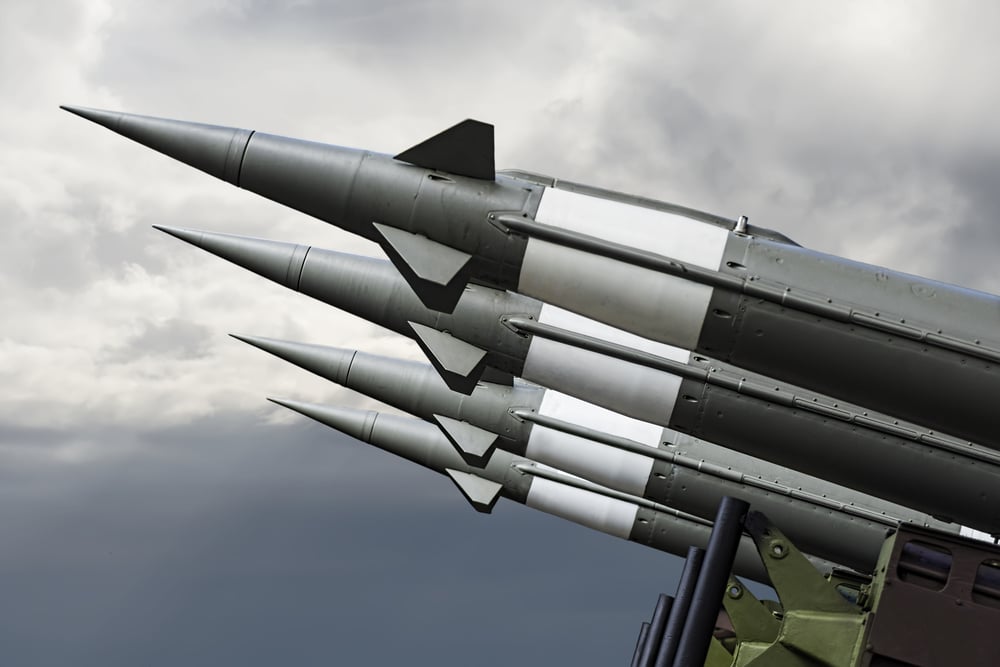


Reading the recent article in Foreign Affairs on “China’s misunderstood nuclear expansion” by M. Taylor Fravel of MIT, Henrik Stålhane Hiim of the Norwegian Defense University College, and Magnus Langset Trøan of the Norwegian Institute of International Affairs, I was struck by a sense of déjà vu. The authors suggest that China’s rapid expansion of its arsenal was brought about by its understandable “fear” of what China views as “threatening changes in U.S. nuclear strategy.” The authors contend that if the United States shows “restraint” in its nuclear posturing, China may follow suit. This was precisely the position of the arms control advocates of the 1970s and 1980s, who urged U.S. policymakers to “freeze” its construction and deployment of nuclear weapons and adopt a “no first use” as a way of coaxing the Soviet Union to do likewise. It didn’t work then, and it won’t work now.
READ MORE: Why Has the CCP Banned Demonizing America?
Fravel, Hiim, and Trøan acknowledge that China not only has expanded its nuclear arsenal but “has accelerated its pursuit of a complete nuclear triad—encompassing land-, sea-, and air-launched ballistic missiles.” They also note that for decades Chinese nuclear policy was to maintain “only enough forces to be able to retaliate if attacked,” but now the leader of the U.S. Strategic Command warns that China’s “strategic breakout” will arm it with “the capability to execute any plausible nuclear employment strategy.” The authors mention Air Force Secretary Frank Kendall’s expressed concern that China is developing a “first-strike capability” but caution that we shouldn’t “infer motivations from capabilities” or make “misleading worst-case assumptions” about Chinese intentions.
Instead of projecting U.S. nuclear strategies onto China, the authors write, we should look at what Chinese strategists write for public consumption. Much of their article is relaying to readers what various Chinese policymakers and strategists have written on this topic. “Chinese analysts,” they write, “are worried that the United States has lowered its threshold for nuclear use,” especially in relation to Taiwan. And they place primary blame for Chinese fears on the Pentagon’s 2018 Nuclear Posture Review, largely the work of former Deputy Assistant Secretary of Defense Elbridge Colby. Quoting Chinese arms control expert Li Bin, retired Chinese Gen. Pan Zhenqiang, and Luo Xi of China’s Academy of Military Science, the authors write that the “2018 review increased Chinese fears that the United States might engage in limited nuclear first use during a conventional conflict with China, most likely over Taiwan.”
Chinese defense analysts, the authors continue, are also concerned about U.S. development of “defensive weapons systems that could negate China’s nuclear deterrent,” including conventional weapons systems, cyberwarfare, and electronic warfare that could destroy China’s arsenal. China worries, too, about U.S. deployment of intermediate-range missiles in the wake of the collapse of the U.S.–Soviet INF Treaty.
The authors’ proposed solution to avoid a new arms race is for the United States to adopt a nuclear posture that is “less provocative.” China’s expansion of its nuclear arsenal, they suggest, “is less immediately threatening than it might appear.” How do they know this? Because that is what Chinese analysts and top Communist Party officials, including Xi Jinping, write and say. And yet, the authors acknowledge that China “has not been transparent about the purpose and goals of its nuclear buildup.” So, according to the authors, the United States should adjust its nuclear posture to be less provocative based on the public statements and writings of top Communist Party officials and strategists, even though those same officials and strategists are not “transparent” about why China is moving forward at such a rapid pace to expand its arsenal.
In the 1970s and 1980s, we were treated to the policy advice of “experts” like Paul Warnke (Jimmy Carter’s top arms control adviser), Robert McNamara (whose mutual assured destruction doctrine ensured the demise of U.S. nuclear superiority), and others who repeatedly urged U.S. presidents to impose a “nuclear freeze,” to adopt a policy of “no first use” of nuclear weapons, and to forego missile defenses, even as the Soviet Union sought a “first-strike” capability against our nuclear forces. The “experts” back then used many of the same arguments advanced by Fravel, Hiim, and Trøan today. The experts back then cited public statements and writings by Soviet officials and strategists to support their arms control positions. The experts back then accused U.S. “hawks” like Sen. Henry M. “Scoop” Jackson and Ronald Reagan of being unnecessarily provocative toward the Soviet Union. And yet, even Jimmy Carter’s defense secretary, Harold Brown, was forced to admit that U.S. restraint had little or no effect on the Soviet nuclear posture. “When we build, they build,” Brown noted. “When we stop, they build.”
What makes anyone think China will be any different?
